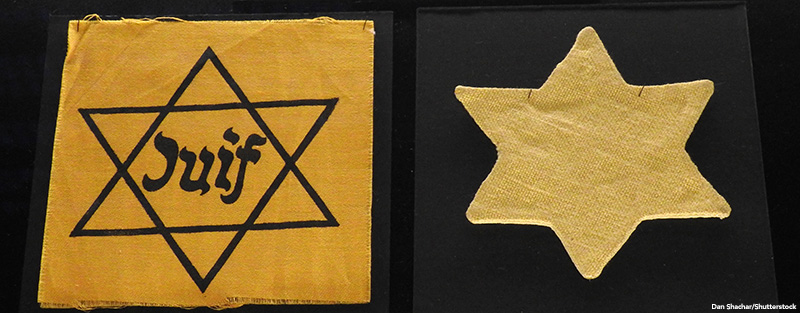
Holocaust Remembrance Day is April 18, 2023. The purpose of this day is for citizens to honor Jews and other victims murdered by the Nazis in the Holocaust genocide during World War II. Below, btw looks more closely at why it is important to remember the Holocaust and the day’s historical origins, its traditions, and online resources for remembrance.
Why Remember?
Adolf Hitler and the Nazi Party came to power in Germany in 1933. The Nazis devised and put into action a campaign to eliminate the Jewish people. Jews were forcibly relocated to camps and then systematically killed. By the time World War II ended in 1945, the Nazis killed approximately six million Jews and five million prisoners of war who they considered socially or politically inferior.

According to the United States Holocaust Memorial Museum (USHMM), remembrance is important for several reasons. Remembering the events of the Holocaust and the suffering from it reminds us not to stay silent and to stand up for persecuted people. Remembrance Day is a time to reflect and remember the victims.
A recent rise in anti-Semitic incidents in the United States provides another reflection opportunity. According to a 2023 report by the Anti-Defamation League, anti-Semitic incidents increased by 36 percent in 2022. This is the highest level of incidents recorded since 1979. Understanding and reflecting on the past helps instruct how to address similar problems occurring now.
How did the Holocaust Days of Remembrance Begin?
Israel began a formal remembrance project that was signed into law in 1953 by Israeli Prime Minister David Ben-Gurion. The goal was for future generations to understand the history of the Holocaust and memorialize the victims each year. In the United States, in 1978, the President’s Commission on the Holocaust recommended an annual Holocaust Day of Remembrance. Congress signed this recommendation into law in 1980. The law also established the Holocaust Memorial Council. It is responsible for coordinating the yearly national remembrance ceremony and it managed the construction of the USHMM in Washington, D.C.
What Traditions are Observed?
Both the United States and Israel hold Day of Remembrance events every year. In Israel, places of business and entertainment close for the day. Televised ceremonies take place at Israel’s official memorial to Holocaust victims, known as Yad Vashem. Six torches are lit during the ceremony to represent the six million victims. Sirens around the country sound for two minutes, and everyone stops and stands silent. Throughout the day, Holocaust history programs air on television and radio. In the United States, the national ceremony takes place at the Capitol Building in Washington, D.C. American Jewish communities often pay respect to victims in local tributes, which highlight the importance of helping fellow Jews who are experiencing hardships.
Digital Resources and Information
The USHMM offers a variety of ways to observe Holocaust Remembrance through online resources, events, and exhibits. It provides four themes for remembrance events: Early Warning Signs, Justice and Accountability, American Responses, and Liberation. The museum also offers resources for each theme. The museum features a large collection of Holocaust survivor reflections and statements. You can observe the day by reading essays written by survivors, or you can watch videos of survivor testimonies. The Holocaust Encyclopedia exhibit helps you explore the 600 victim identification cards in its collection. Each card has a photo, birth date, and personal history.
This year marks the 80th anniversary of the Warsaw Ghetto Uprising. This uprising was the largest Jewish resistance against the Nazis during the Holocaust. The museum offers primary sources on the Warsaw Ghetto Uprising in an online exhibit that includes music and video testimonies. All of these resources help you learn more about the Holocaust, its victims, and its survivors.
